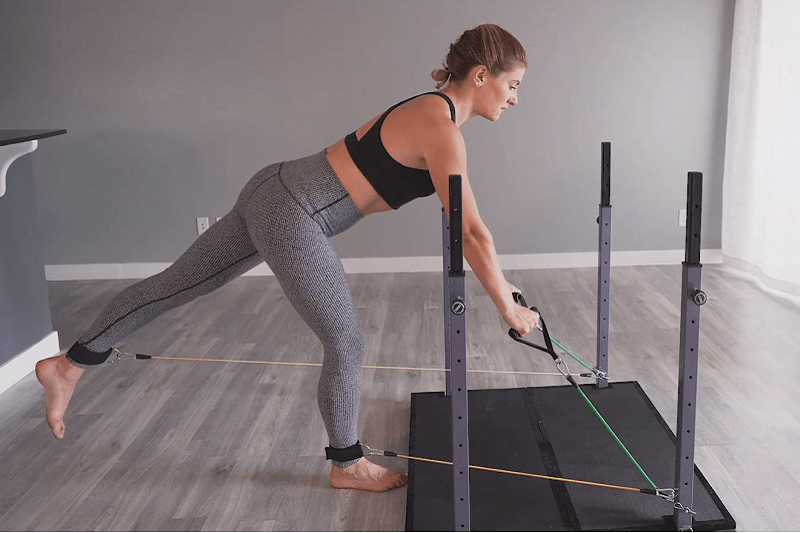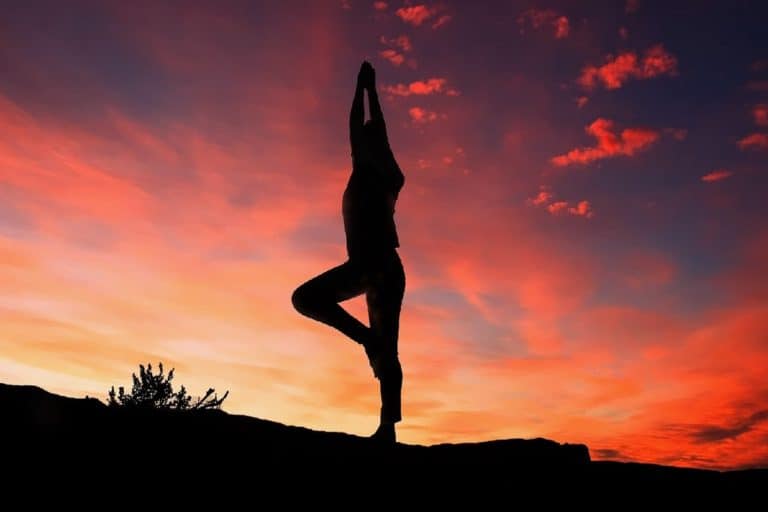
More Than Strength and Endurance | Other Important Benefits of Exercise
When we think about exercise we often think about getting stronger and developing our cardio. Otherwise, we think about improving our general health; i.e. reducing stress, sleeping better, etc. These are all excellent reasons to exercise. However, there are other benefits of exercise we should also consider.
Benefits of Exercise We Don't Talk About
In this blog, we'll discuss stability and mobility and their role in our lives.
When we hear terms like stability and mobility, it's easy to assume that they apply more to athletes. To be honest, this assumption makes sense. Athletes are required to move faster and with more intensity than us "non-athletes". Therefore, it makes sense that they need to master stability and mobility.
But, these characteristics are benefits of exercise that we undervalue and play a bigger role in your life than you may think.
What is Stability?
The general definition of the root word stable is: “not likely to give way or overturn; firmly fixed”.
In other words, stability is our ability to keep an upright (standing) and neutral (natural position of the spine) position while doing anything standing. Yes, even standing itself. Even if you don't realize it, there are always external forces working against you and challenging your stability.
One of those forces is one we've all heard of.
Can you guess what it is? If you said gravity, you're right!
Can you remember a time when you were casually standing and almost fell over under your own weight?
I certainly can. That’s gravity working against you.
What about the simple act of walking? Because we do so much of it, we overlook the importance of stability and its role in our ability to walk. In fact, when you walk, you constantly put yourself in a state of imbalance. With every step, you reduce your base of support by raising one leg.
So how are you able to stay upright so effortlessly? How do you maintain this constant state of stability?
Well, through your day-to-day life, you train yourself to be stable. Walking is a movement you use and "train" every day. So, you better be good at it!
But, is that good enough?
What if the level of difficulty increased to movements like jogging, running, climbing stairs, jumping, or throwing?
Is your “training” still adequate?

Why is it Important to Train Your Stability?
As suggested above, concepts like “stability training” are immediately associated with athletes because they make movements that are much more aggressive in nature than the average person. Athletes are also subject to external forces (body contact, etc.) that you can’t even imagine. And, if not athletes, you may associate stability with a Yogi holding a beautiful single-legged pose.
Even though these perfect examples of stability in action, you can't overlook the importance of stability in your day-to-day life. If you overlook this benefit of exercise, you're missing out on an important opportunity to make your life easier.
You're in a constant state of movement and each one of your movements will be made easier if you dedicate some time to developing your stability. There are external forces that push and pull you and challenge your state of stability. On a daily basis, you do much more than stand and walk. You run, you play with your kids, you carry your kids, you carry groceries, you throw, and you jump.
Every move you make shifts your center of gravity, and therefore challenges your stability. So, a well-rounded and effective workout program will include exercises that take you out of balance. Your stability workout should be specifically designed to activate and challenge your core and the stabilizing muscles around your joints. This forces them to develop, adapt, and strengthen and as a result, improves your stability.
The next time you trip or slip, you'll have the ability to stay standing.
How You Should Train Stability Workout
As mentioned above, each time you move your center of gravity shifts, therefore challenging your stability. So to train stability, you must put yourself in positions that shift your center of gravity more than usual. You can do this by reducing your base of support (standing on one leg) or addiing resistance to your extremities, particularly your legs. You don't need to use much resistance.
Resistance bands are an excellent choice because they provide natural resistance. They will also limit your risk of injury and have little impact on your joints.
It’s time you start training your stability.
Your body will thank you for it.








What is Mobility and How is it Different From Flexibility?
The line between flexibility and mobility is often blurred and confused. This is understandable.
Although they shouldn’t be substituted for one another, they're certainly related and limitations in either flexibility or mobility will result in the restriction of movement. Understanding the difference between flexibility and mobility will help you create a workout program that maximizes your ability to move and reduces your risk of injury.
Limiting your risk of injury is one of the most important benefits of exercise.
Let's Define Mobility and Flexibility
Flexibility, in general terms, is the defined as the ability to bend without breaking. It refers to your ability to move passively through your joints (shoulders, hips, ankles, etc.).
Imagine a static (held) stretch where you use your bodyweight or other parts of your body (limbs, etc.) to maximize the depth of the stretch. The assistance from your bodyweight, limbs, or external apparatus is what makes the movement “passive”. Your flexibility is indicative of how tight your muscles or group of muscles are.
Mobility, in general terms, is defined as the ability to move freely and easily. Although it's simple by definition, it's actually a bit more complicated than flexibility. Mobility refers your ability to move actively and dynamically through your joints. In other words, it's your ability to move through a complete range of motion without restriction and limitation and without the help of any external support. There are many factors that affect your mobility including strength, neuromuscular response, and flexibility itself. Someone who has good flexibility doesn’t necessarily have good mobility, but someone that has good mobility probably has good flexibility.
For the purposes and simplicity of this blog, let's refer to them collectively as “mobility”.
Mobility will differ from joint to joint and from individual to individual. It can be dependent on age, gender, time of day, temperature, etc.

Why is Mobility Important?
Simply put, having good mobility decreases your risk of injury and increases the effectiveness of your movements.
The discussion should really end right there.
Having adequate mobility reduces your risk of injury because it allows you to move through a complete range of motion. To put this into perspective, imagine a squat (or the act of sitting). To do a proper squat, you must be able to move freely (without restriction) through your hip and ankle joints. In other words, your ability to do a proper squat is dependent on the freedom of movement, the range of motion, through your hips and ankles. It should be noted that when you squat, you also move through your knee joints. But, unlike your hips and ankles, your knees aren't designed to have a large range of motion and should be limited in mobility. You wouldn’t want your knees to be excessively mobile side-to-side or backwards… right?
Mobility Helps You Maximize Your Exercise
To get the most out of your exercise, it's important you go through a complete range of motion. This is especially true for exercises that require your entire body; squats, lunges, push-ups, etc. For example, to get the most out of your hard earned push-ups, you have to lower yourself as close to the ground as possible. If you have really tight shoulders, you'll find that you have a limited range of motion through the shoulder joints. Therefore, going all the way to the ground will be very difficult. Similarly, tight hips and ankles will limit your range of motion through squats and lunges.
But even though we're restricted, many of us will try anyway. And, when you exceed the range of motion permitted by your joints, you put yourself at serious risk of injury.
Think of your body as a vehicle. Both are extremely useful in helping you move from place to place, but only continue to be useful if you maintain it.
Mobility training is how you maintain your body’s ability to move.
The Top 5 Movements to Increase Mobility
Mobility isn't something you just have or can force. It has to be trained carefully and gradually. This is why resistance bands are a great tool to train mobility. The gradual and elastic nature of resistance bands is exactly what you need to ease your way into mobility exercises. Resistance bands, which are not dependent on gravity, offer resistance in all planes of motion and encourage you to move through the greatest range of motion possible. Consider your shoulder joint, a ball and socket joint capable of 360 motion. Resistance bands will help you develop range of motion in all 360 degrees and help you move freely through your shoulder joints.
In conclusion, stability and mobility are benefits of exercise you shouldn't overlook. They'll make your movements much easier and help you reduce your risk of injury. To learn about general benefits of exercise, read our blog about "Why Exercise is Important".